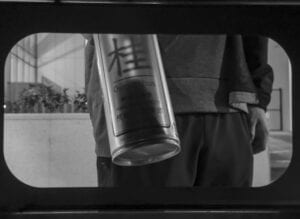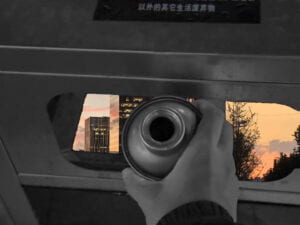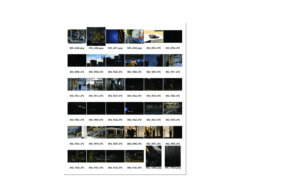Photo Diptych
Exchanging Stories
So,the title of my work is Exchanging Stories, and I’m excited to share my journey in bringing this creation to life through this post.

CONCEPT
Life is undeniably filled with romance, and I believe that infusing a touch of romance into my work is essential. Inspired by a conversation with Professor Zhang, who once shared that art involves perceiving life from unconventional perspectives, I found myself drawn to an unlikely source of inspiration—the garbage can. This often overlooked object holds a multitude of stories just waiting to be discovered. Within its depths lie discarded flowers from Valentine’s Day, beloved comic books abandoned by parents, and even homeless cats and dogs seeking refuge. The garbage can faithfully remains in its place, silently accepting the emotional residue of others, yet no one has ever taken the time to truly listen to its tales. Consequently, my work focuses on fostering a storytelling exchange with the garbage can through the simple act of discarding waste.
PROGRESS
First Photo: Even before capturing the first photograph, I found myself reevaluating and refining my chosen theme. It became apparent to me that the two photos needed to be interconnected in some manner, and I found the concept of shifting perspectives to be a fascinating approach. Transitioning from the viewpoint of a garbage can to that of a human being symbolized an internal exchange, a profound shift in perception. Consequently, I endeavored to capture the first image from the perspective of the trash can itself. Naturally, photographing from within a trash can presented challenges, so I opted to zoom in and utilize the elliptical shape of the can as the focal point. By doing so, I aimed to centralize the action of discarding trash, emphasizing its significance within the composition.
Second Photo: While crafting the second chapter’s image, I contemplated how I could create a striking contrast with the first photograph. It occurred to me that I could transform the initial image into black and white, while rendering the exterior of the trash can in black and white as well, but preserving the colors on the inside. This would symbolize the captivating narratives hidden within the trash can’s confines.
However, I encountered challenges when deciding what elements to include within the colored photos placed inside the trash can. Striking a balance was crucial—I didn’t want the picture to appear cluttered, unfocused, or overly complex, yet I also wanted to convey that the trash can held compelling stories. After careful consideration, I opted to include two sunset photos—one capturing the beauty of a natural landscape and the other showcasing a human landscape during sunset. These images aimed to convey the overarching narrative within the trash can. However, I acknowledge that further refinement is needed to add more nuanced details and depth to the composition.
CONCLUSION
Certainly, continuous improvement is an essential part of any creative process. As I mentioned, refining the selection and design of the photos within the trash can is a crucial aspect. Careful consideration should be given to choose images that convey specific storytelling details, enhancing the narrative and capturing the viewer’s imagination.
In terms of composition, incorporating a sense of regularity can indeed strengthen the visual impact. Professor Zhang’s suggestion of utilizing an oval box in both pictures to emphasize their connection is thought-provoking. This idea opens up avenues for exploring further possibilities and incorporating cohesive elements that enhance the overall composition. It’s definitely worth contemplating and incorporating into your future assignments to create a more harmonious and visually engaging body of work.

——– Chenhan Xu